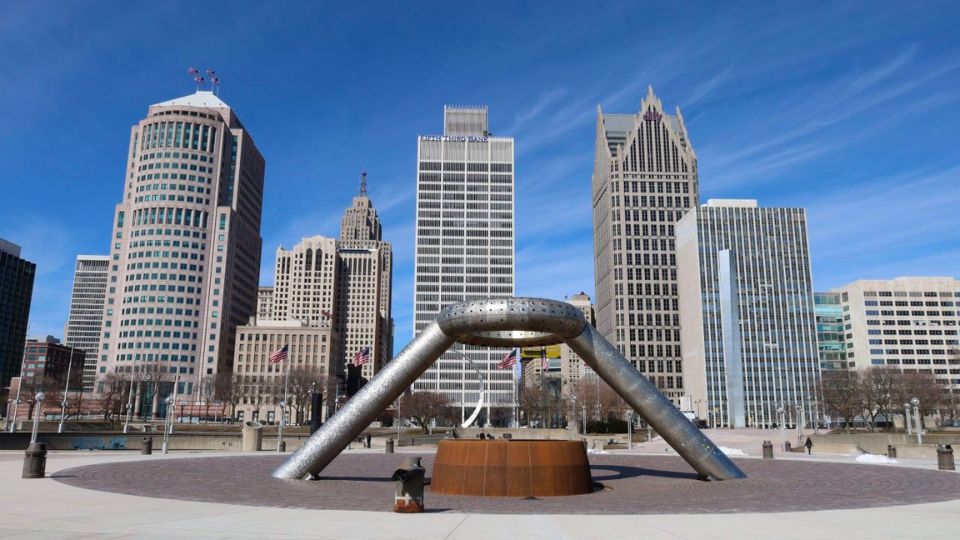Detroit is the seat of Wayne county in southeastern Michigan, United States. Situated on the Detroit River, which connects Lakes Erie and St. Clair, lies a city opposite Windsor, Ontario, Canada. In 1701, Detroit was established by Antoine de la Mothe Cadillac, a French trader. Cadillac constructed a fort along the river and named it Fort Pontchartrain du Détroit, after his patron. Eventually, the British referred to it as Detroit. The city’s name became closely associated with the American automotive industry in the 20th century.
The population of Detroit in 2010 was 713,777, with the Detroit-Livonia-Dearborn Metro Division having a population of 1,820,584 and the Detroit-Warren-Livonia Metro Area having a population of 4,296,250. As of 2020, the population of Detroit has decreased to 639,111, with the Detroit-Dearborn-Livonia Metro Division having a population of 1,793,561 and the Detroit-Warren-Dearborn Metro Area having a population of 4,392,041.
City Layout
Detroit is located on a wide, predominantly level plain. The downtown area still bears traces of a hexagonal street pattern that was established in the early 19th century but gradually vanished as the city grew. The downtown area of the city is home to a majority of the city’s commercial and civic buildings. These include the City-County Building, Cobo Hall, Cobo Arena, and the Renaissance Center, which boasts a 73-story hotel and was completed in 1977.
The city’s museums and the public library, on the other hand, can be found approximately 2 miles (3 km) northwest in the Detroit Cultural Center. The suburbs surrounding Detroit are completely encircled by the city, including the communities of Hamtramck and Highland Park.
Population and Economy
The population of Detroit experienced a significant increase from 1850 to 1950. The city experienced a significant influx of migrants, initially consisting mainly of European immigrants and later African Americans from the Southern states. The population has experienced a steady decline since the mid-1950s. This can be attributed to factors such as the migration of a significant portion of the white community to the suburbs, as well as the decline of local industries. Around the start of the 21st century, approximately 80% of the population consisted of African Americans.
Detroit’s economy is closely tied to the automotive industry, which has a significant impact on the city’s overall economic health. Despite having a diversified manufacturing and shipping base, the fortunes of the automotive industry greatly influence Detroit’s economic stability.
Detroit has experienced the impacts of economic booms and depressions more significantly compared to other parts of the country. The city’s factories are responsible for the production of machinery, steel, and chemicals, in addition to motor vehicles and automotive parts. The service sector has seen a significant rise in its importance.
Also Read: Montgomery Mayor Engages with U.S. Cabinet Secretaries to Discuss City’s Future
Detroit’s transportation system is heavily focused on roads, which consist of a vast network of express highways. In 1987, the Detroit People Mover, a light-rail system that serves the central business district, was completed. Originally, its purpose was to be a crucial component of a larger regional transit system.
Unfortunately, the anticipated funding never came through, as there was a lack of support for rail transit in a city heavily dependent on automobiles. As a result, the People Mover ended up being more of a tourist attraction than a practical transportation option. A bridge and a tunnel connect the city to Windsor.
The Detroit River sees significant traffic from Great Lakes shipping, with the region’s port facilities managing substantial amounts of raw materials. The Detroit Metropolitan Wayne County Airport is situated approximately 17 miles (27 km) to the southwest of downtown.
Detroit Cultural Life
Two notable institutions in the city are Wayne State University, established in 1868, and the University of Detroit Mercy, founded in 1877. Notable cultural institutions in the area include Cranbrook Academy of Art in suburban Bloomfield Hills and the Detroit Institute of Arts. The Motown Historical Museum houses the very place where Berry Gordy, Jr. established the renowned Motown Record Corporation. It serves as a testament to the birthplace of the timeless soul music that was crafted within its walls.
The Henry Ford Museum in suburban Dearborn houses a vast collection of transportation equipment, while the adjacent Greenfield Village showcases reconstructions of 19th-century American buildings and exhibits traditional crafts. Detroit has had a symphony orchestra since 1914. The city also hosts summer concerts at the Meadow Brook Music Festival in nearby Rochester.



Leave a Reply